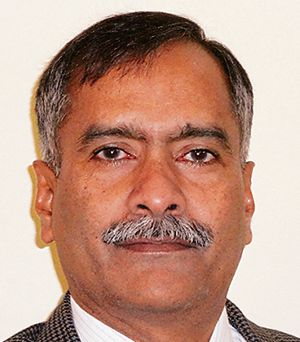Helicopters: In war & peace
Air Vice Marshal Manmohan Bahadur (retd)
Helicopters, before they proved their mettle in battle, were labelled “egg-beater” and “whirly bird”. The Indian Air Force (IAF) started off in the 1950s with Bell-47 and Sikorsky-55 copters. And then went onto using Russian-origin Mi-series helicopters (Mi-4/8/17/25/26/35) and exploiting Chetak/Cheetahs to limits their designers had not dreamt of. The IAF now has 30-plus helicopter units (HUs) operating across its territory. It was baptism by fire during the 1962 India-China war. In his book, “Unknown and Unsung”, Air Marshal Bharat Kumar (retd) tells the details on the role of IAF’s helicopter fleet in the critical 30-day period, starting October 20, 1962.
Sqn Ldr Vinod Sehgal, Commanding Officer, 104 HU, became the first IAF casualty in NEFA (Arunachal Pradesh) on October 20. His helicopter later featured in Chinese media, but he was not in the POW list, having been killed in cold blood.
Sqn Ldr AS Williams, commanding 105 HU tasked to locate Sehgal’s copter, also got shot and was forced to land. Ten days prior, Sqn Ldr Williams had flown at night with the instrument panel being illuminated by a torch held by the casualty he was evacuating.
In a rescue mission, Wing Cdr KK Saini flew 37 personnel (in peacetime, the limit is 12) in a single Mi-4 sortie from Walong.
Air Marshal Trevor Osman, who was then a young Flying Officer in Tezpur, said, “The helicopter pilots were overworked and tired with sleep deprivation. We, young fighter pilots, flew as their co-pilots and took over control of the helicopter after take-off while they grabbed some sleep till just before landing when they were woken up to do the touch down.”
A similar story played out in Ladakh where 107 HU flew combat missions to supply outlying posts, especially in the Daulat Beg Oldie sector. When a withdrawal was ordered, casualties were brought back under very difficult conditions. In the Galwan sub-sector (yes, the same one that garnered limelight for the bloody skirmish in 2020), a record of sorts was created as “a whole battalion of the 5 Jat was replaced by the 1/8 Gurkha right under Chinese nose”.
Mi-4 and Chetak helicopters were extensively deployed in the 1971 India-Pak war for ferrying troops. Well-known is the Meghna river crossing in which a “heli bridge” was established to help the Army leapfrog its way to Dhaka forcing a Pakistani surrender on December 16.
In the 1970s, India decided to counter Pakistan on Siachen Glacier. Col Narendra ‘Bull’ Kumar lead an Army expedition in 1978, with the lone IAF Chetak helicopter of 114 HU on detachment at Leh giving logistics cover. The first copter landing on Siachen took place on October 6, 1978, in which I was the co-pilot to Sqn Ldr ML Monga. History apart, Op Meghdoot, launched on April 13, 1984 to establish a permanent foothold of the Army on Siachen was supported by the IAF’s copters — Cheetal, Dhruv and Mi-17.
Copters are not just about military logistics and medical evacuations, they have been first responders for disaster relief. IAF helicopters have been deployed after earthquakes, floods or tsunami. In military diplomacy, the Indian flag has been flown by helicopters in numerous UN missions in Africa. Hard power was exploited through Mi-25 gunships in Sri Lanka peace keeping operations in 1980s. In today’s age, Apache and indigenous Prachand attack helicopters help maintain a deterrent posture in the eastern Ladakh crisis.
Since copters doing such multitasking, it would only be right that the common Presidential logo given to all IAF helicopter units with the motto “Aapatsu Mitram” (a friend in need) be changed to reflect the specific operational task allotted to each HU. Hopefully, the government and Air HQ are alive to this long pending acknowledgement of the work put in by these flying machines and those who operate them.
The writer is a former Additional Director General, Centre for Air Power Studies, New Delhi









